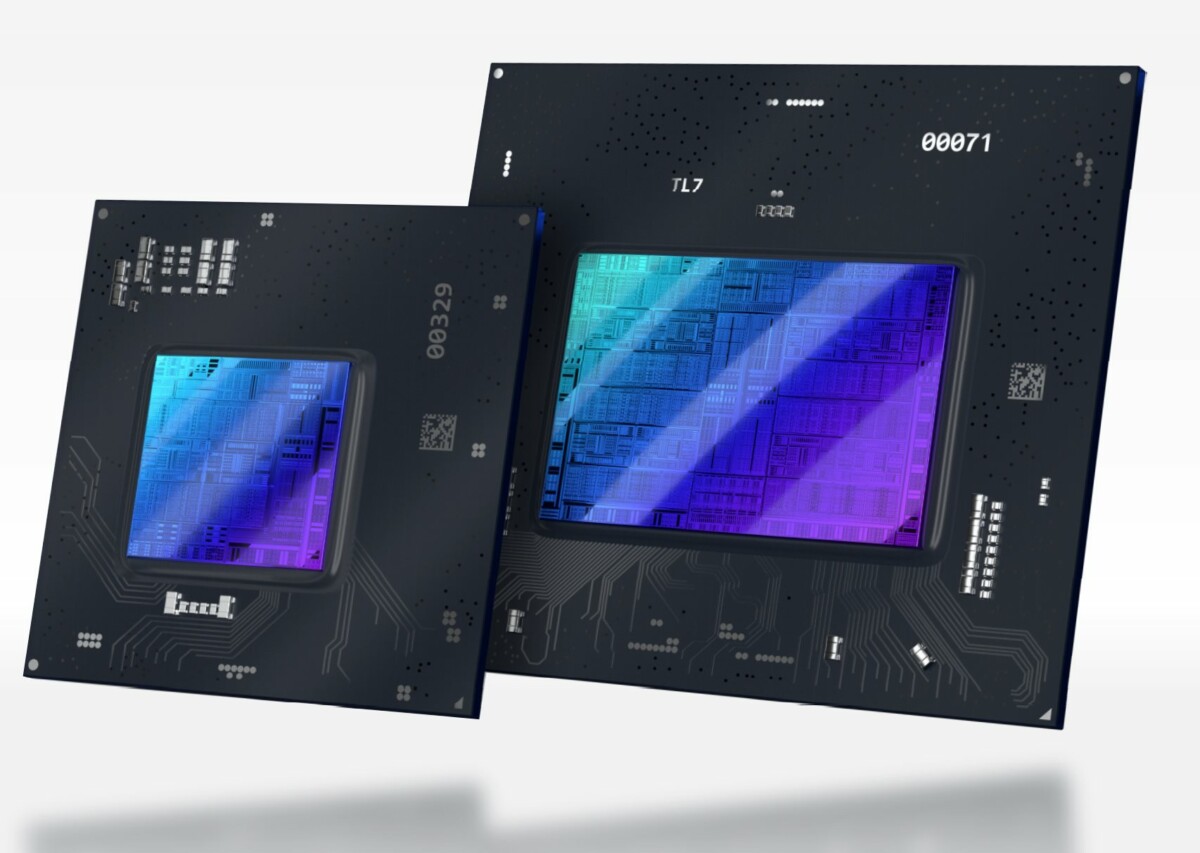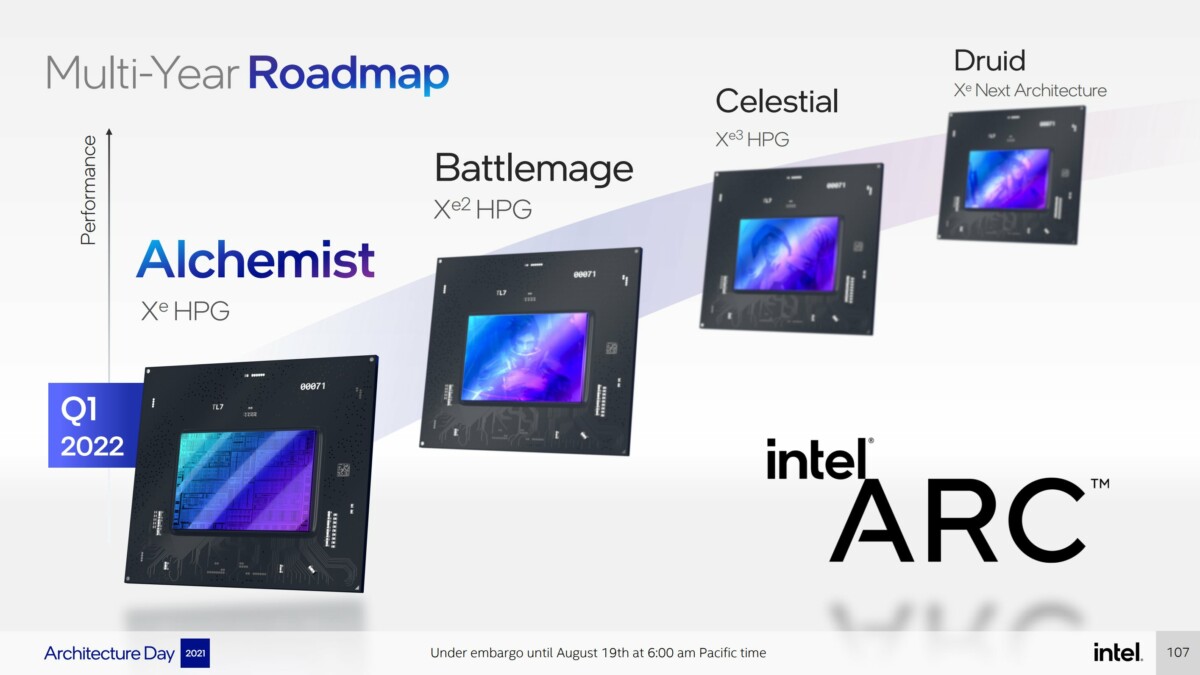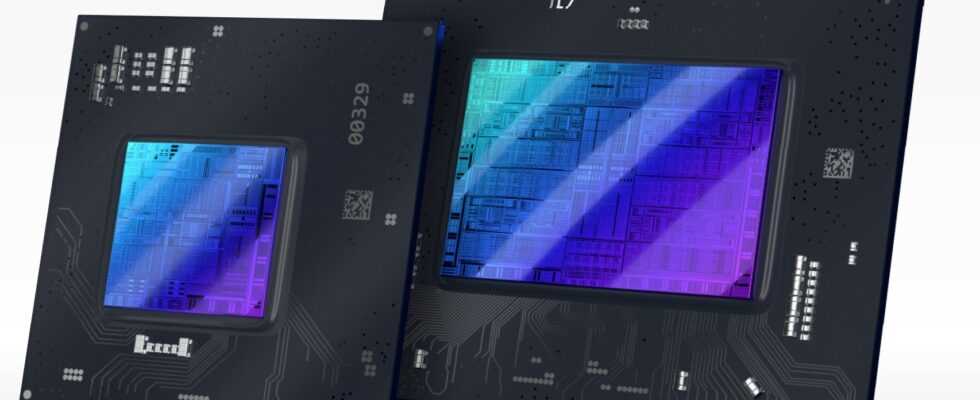Like AMD a few years ago, Intel would initially seek to attack Nvidia on its mid-range by launching two ARC Alchemist GPUs, cut to compete with the RTX 3070/3070 Ti and 3060/3060 Ti on desktop PCs.

With its next ARC Alchemist chips, Intel obviously intends to give Nvidia a hard time on the mid-range // Source: Intel
CES is approaching and with it the Intel conference in January, which should definitely enlighten us on the launch and technical specifications of the next Intel “ARC Alchemist” graphics cards, based on the Xe-HPG DG2 GPU – itself declined in August. at least three variants. Originally anticipated for January, these cards would finally arrive on the market somewhere in the first quarter of 2022 or at the start of the second quarter according to some sources. Rumors that should still be taken with a grain of salt. WCCFTech for its part evokes a marketing between mid-February and March, whether for the reference versions or for the models reworked by Intel’s AIB partners.
In this case, two main Intel ARC graphics cards are expected in the first months of 2022. With the exception of the entry-level ARC A380 model, which will use the DG2-128 GPU and will be limited to 35 W of TGP to compete with the future RTX 2050 from Nvidia (a restrained RTX 3050 expected in spring 2022), Intel would be ready to unveil two first-rate cards. These will probably be based on the DG2-512 chip, which is much faster.
A good price / performance ratio for future Intel cards?
Intel’s most powerful ARC Alchemist card is said to have 512 execution units (for 4096 cores) and 16 GB of GDDR6 at 16 or 18 Gbps (on a 256-bit bus). Its TGP could go up to a maximum of 275 W. On this model, the GPU would be clocked between 2.2 and 2.5 GHz and could thus develop 18.5 TFlops of computing power in FP32, that is to say 40% more than the AMD’s Radeon RX 6700 XT, but 9% less than an RTX 3070 from Nvidia. Provided it is placed at an attractive price, Intel could therefore compete with the RTX 3070/3070 Ti … and therefore with the plush mid-range of Nvidia.

Intel’s mid-tier model would bet on 384 execution units (3072 cores) and 12 GB of GDDR6 at 16 Gbps (via a 192-bit bus this time). Its TGP would be limited to 150-200 W and its overall performance would allow it to compete with the RTX 3060/3060 Ti by offering a good power / price ratio.
As a reminder, these different chips will be engraved in 6 nm by TSMC (Intel will therefore subcontract their manufacture) and their die would be slightly larger than at Nvidia: around 396 mm² for the Intel DG2-512 GPU against 392 mm² for the GA104 GPU from Nvidia (used in particular for the RTX 3070 Ti).
Gaming laptops also served
Note that these two mid-range GPUs will also be available on laptops, for machines entirely powered by Intel, both in terms of CPU and GPU. The differences with the models mentioned above would be especially to look for on the side of the TGP, necessarily. According to WCCFTech, the 512 EU version would be limited to 120-150 W and would compete with the mobile RTX 3080, the 384 EU version would be reduced to 80-120 W and could tackle the RTX 3070 mobile.
On laptops, Intel would also bet on a third variant based on the same GPU … but slightly castrated. This time, we would find only 256 execution units, 8 GB of GDDR6 (16 Gbps, 128-bit) and a 60-80 W TGP. This version would reach the same level as the mobile RTX 3060.
One thing is clear, after having ceded market share to AMD, Nvidia will also have to put up with competition from Intel. A delicate position, all the more so on the laptop market where Nvidia reigned virtually unchallenged a few months ago. For consumers, this proliferation of alternatives is excellent news, but it remains to be seen how Intel will position itself in terms of pricing. First elements of response expected at the CES.
To follow us, we invite you to download our Android and iOS application. You will be able to read our articles, files, and watch our latest YouTube videos.
